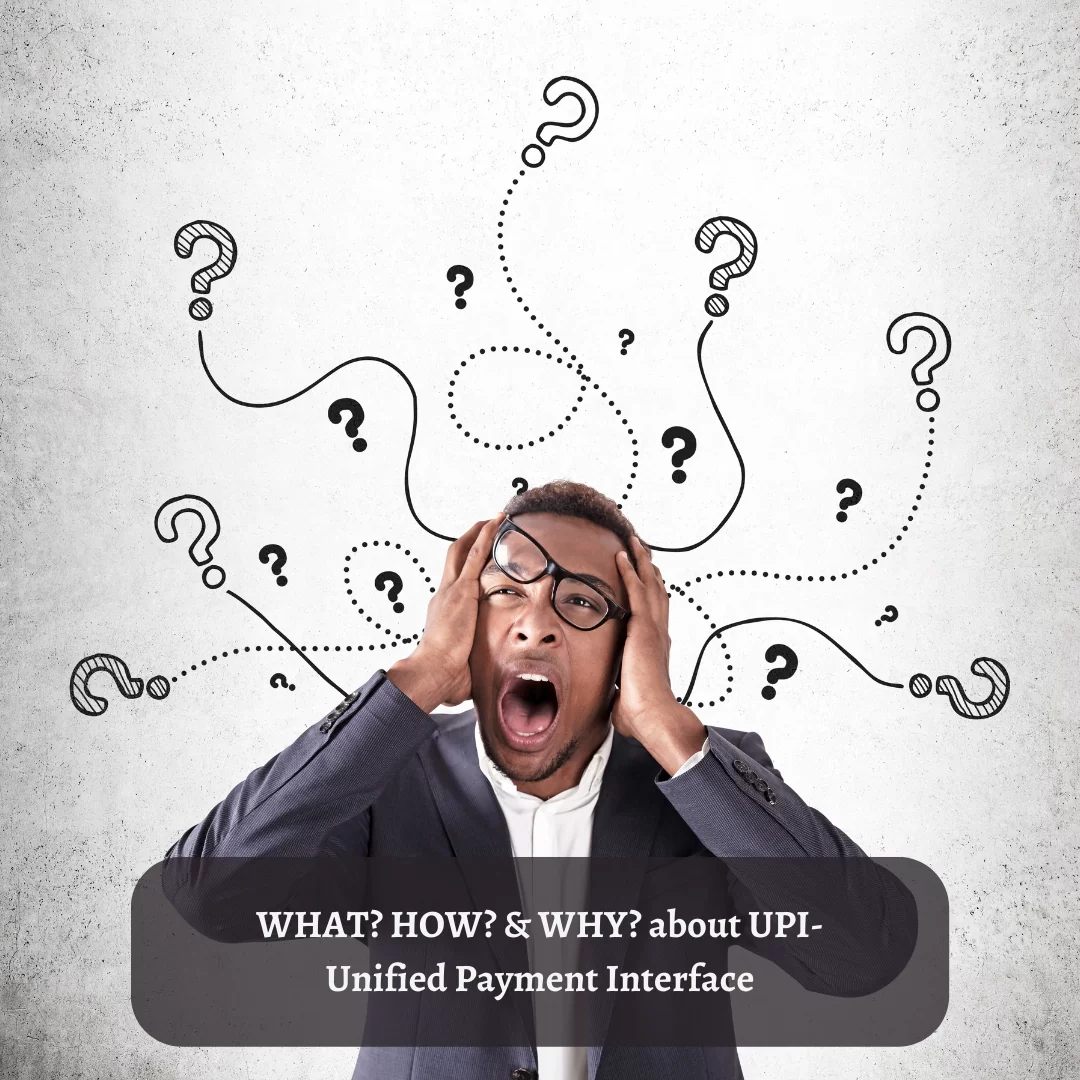What is UPI?
Unified Payment Interface (UPI) is a single platform that provides different banking services and features. If your bank is UPI enabled, you can create a UPI ID that can be used for making transactions. A transaction can be made using an Aadhaar number, Mobile number, and Virtual Payment Address (UPI ID). UPI allows the user to transfer and receive money from one bank account to another by using a smartphone. It enables the transfer directly from a bank account to the merchant and also handles basic banking activities. UPI is a revolution that can be an alternative to e-wallets, in other words, UPI is the best thing in the online money market.
UPI is a creation of NPCI & RBI and is an initiative by P.M Narendra Modi.
How to Use UPI?

For using UPI service on your mobile phone you just need to set up UPI ID which is linked to your bank account. There are many mobile applications that provide UPI facility, and UPI ID can be set up from these applications. UPI IDs have the same format for all UPI-enabled applications. The format is “XXXXXXXXXX@upi”, wherein XXXXXXXXX is the number followed by @ and then followed by the application from which you’ve built your UPI ID. So if you build a UPI ID from Paytm it will be, “XXXXXXXXXXX@paytm”. It is also possible to create your own unique UPI ID.
Once you’re done with creating UPI ID the further procedure remains the same for all the mobile applications which are providing your mobile number. After providing your number an SMS is sent for fetching your bank account details. Make sure the mobile number you enter is linked with the bank account for which you seek UPI service.
Your UPI-enabled bank account will be displayed on the screen, just confirm the band details and then you can set up a 4-digit PIN, this pin will remain the same for your bank account across all the UPI-enabled applications.
UPI-enabled Banks:
UPI is the most convenient feature, many banks in India have integrated UPI payments facility into their platform. UPI facility is available through its own app. It can be implemented into their own banking app or a separate app.
There are many UPI-enabled apps, the ones listed below are the most popular,
- State Bank of India- SBI Pay
- Kotak Mahindra Bank- KOTAK Pay
- Syndicate Bank- Synd UPI
- Punjab National Bank- BHIM PNB
- Bank of Baroda- Baroda PAY
- Axis Bank- Axis Pay
- Indian Overseas Bank- IOB UPI
Why UPI?

When there are so many e-wallets, payment gateway, and online payment options available, why is the need for UPI then? Well, UPI is unlike all of these options, this initiative by NPCI eliminates the need for e-wallets and entering credit/debit card details and remembering passwords. UPI contradicts the current procedures of e-wallets and Net banking which are prone to hacking and malfunctioning, UPI is more secure. UPI is a great alternative for e-wallet for the following reasons,
Easy Usability:
Unlike e-wallet which involves several steps for money transfer, from adding the money from the bank account to the wallet and then paying the beneficiary from a wallet, it is a lengthy process, UPI is directly linked to the bank account and thus the payment is done directly from the bank account which eliminates the hassle of adding the money to wallet and then making payment giving the payer complete ease of payment.
Increased Adoption:
Many e-wallet apps have already started adopting UPI services into the application. Paytm has implemented the UPI service into their application. UPI is very much useful in transferring funds, It can be used to pay the driver’s salary or can be used to pay for goods or services. UPI platform lightened up after the launch of the BHIM app and later on apps like Google Tez increased the value of UPI in the online finance market.
No KYC:
E-wallet has this requirement called Know Your Customer(KYC) after the introduction of which e-wallets have faced a fall in payments. Whereas for UPI, KYC is not required and thus is preferred by many customers.
Incompatibility:
In e-wallets, KYC is a lengthy process because of which e-wallets have faced a fall in the volume of payments, but even after completing the KYC, you cannot transfer the money from one wallet to another.
UPI has become a central point in the process of the cashless India Initiative. UPI will transform the economy into a stronger, more independent, and purer one.
Digital Payment Guru provides the merchant with a facility in one of the payment options wherein the buyer can pay a merchant with UPI with lower transaction rates.


